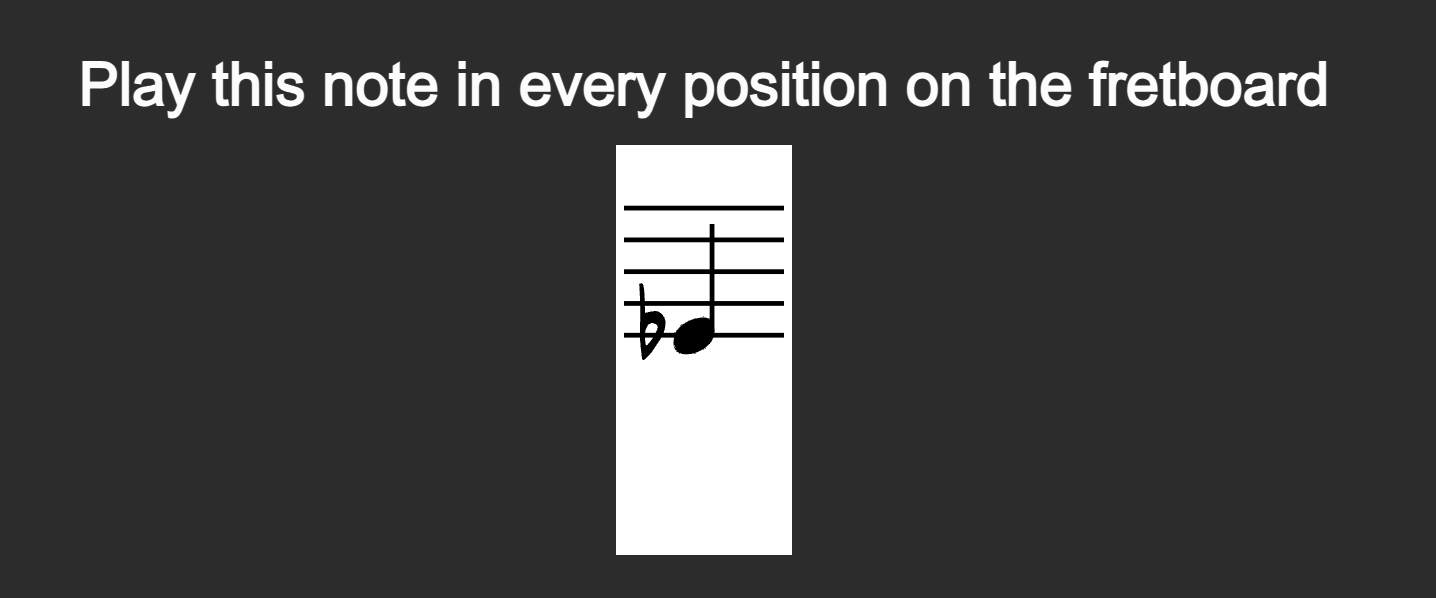This deck is designed for guitarists who struggle with sight reading.
If you don’t know Anki, learn more from their official website or Wiki.
If you’re not sure why you’d want to use Anki, I encourage you to read the background section of their manual.
There are also plenty of YouTube videos sharing personal experiences—for example, this one explains how to learn languages with Anki. But the same principles apply: you can memorize anything with Anki, once you know how to make effective cards.
Here’s a useful article: How to Use Anki: An Efficient Tutorial for Beginners.
If you want to dig deeper into FSRS, the algorithm Anki currently uses, check out this wiki.
Sight Reading on Guitar
Sight reading on guitar is challenging because:
- Many guitarists never learn standard notation, but instead rely on ear or tablature.
- The same pitch can appear in multiple places on the fretboard.
- You must decide fingerings on the spot.
- Fretboard patterns are limited, and there’s often not enough time to map written notes to finger positions.
- You rarely get chances to sight read in practice or performance, so the skill never develops.
Yet sight reading is important if you want to be a professional guitarist, because:
- No one in a band will hand you a tab.
- It gives you quick access to a much wider repertoire—you don’t need a tab for a Bach sonata or a violin étude.
- It helps you learn faster, and connects directly to improvisation and theory.
- It builds confidence in auditions, jam sessions, and other professional situations.
This deck is my attempt to help with sight reading.
It covers notes from the lowest pitch on guitar up to high C5 (1st string, 20th fret), including enharmonic spellings. All notes are marked on a 22-fret guitar fretboard diagram.
Import the Deck into Anki
Make sure Anki is installed on your computer. Then download the deck here: Single Note - Guitar Sight Reading.
Once downloaded, import the deck into Anki.
How to Use This Deck
The front of each flashcard shows a single note on the treble clef.

The back shows the note name and its positions on the guitar fretboard.

Your task: play all positions of that note on the guitar within the time limit.
Check the answer side if you missed a position or weren’t sure. If you didn’t get them all, click again. If you succeeded, click good.
Settings & Tips
Auto Advance
Auto Advance is currently set to 10 seconds, meaning you have 10 seconds to play the notes.
Important: you must press Shift + A to enable it when studying.
You can change this setting in the deck options to allow more or less time.
Be Honest
The algorithm only works if you’re honest about your answers. If you missed any positions or played a wrong note, press again.
I usually ignore the hard and easy buttons. If you use them, never press hard when you really should press again.
Be Consistent
This method works best with consistency. Aim to review and learn new cards every day.
If there are too many cards, adjust the daily new card/review limits in the deck options.
I recommend spending 25–30 minutes a day on this deck.
Vary your playing order
When memorizing, it’s easy to fall into familiar patterns. For example, you might always move from the low strings to the high strings. This can make it feel like you’ve learned all the notes, when in reality you’re relying on that one direction. If asked to find the same notes in reverse or in a random order, you may get stuck.
Once you feel confident, challenge yourself by playing the same notes in a different order—reverse the direction, skip around, or even choose notes at random. This helps you build true flexibility and recall.
Be Creative
This deck is only a starting point in your sight reading journey. Once you’re comfortable, try creating your own cards:
- Chunk multiple notes together.
- Practice sight reading chords.
- Add rhythmic patterns.
There’s a lot more you can explore by designing your own cards and decks as well.
If you have any question or thoughts you want to share, leave me a comment or email me at: Runshengzhao@Proton.me
Disclaimer: An LLM was used to assist with spelling, grammar, and wording improvements in this text.
I’d love to hear what you think. Use your GitHub account to leave a comment below! 欢迎用 GitHub 账号在下方留言交流!